For those who regularly require a projector in their home or office, sound can be an issue. If you’re struggling to make your projector louder or just looking for solutions to improve the audio quality, you’ve come to the right place! In this blog post, we’ll explain how easy it is to make a projector louder with just a few simple adjustments and considerations. We’ll provide step-by-step instructions so that readers can follow along while they work and at last dive into potential outside companies dedicated specifically towards projecting sounds making sure that all of your audio needs are met – no matter what type of entertainment setup you’re using!
What Are the Most Popular Projectors?
The projector is an increasingly popular display device for home theaters and multimedia presentations. As the technology continues to improve, projectors are becoming more widely used and offer higher quality images than ever before. [1]
When considering what the most popular projectors are, it’s important to look at a variety of factors. These include:
- High resolution: Resolution refers to the number of pixels that make up an image. A higher resolution projector will provide more detailed images.
- Brightness: A projector’s brightness is measured in ANSI lumens and should be high enough to be visible even in well-lit rooms.
- Connectivity options: It’s important that a projector has the necessary ports for connecting with other devices such as laptops, tablets and smartphones. HDMI, USB, display port and VGA are the most common ports.
- Lens quality: Projectors use lenses to project their images. Higher-end projectors will have superior optics which provide sharper resolution and better color saturation.
- Price: Projector prices can vary greatly depending on the features they offer, but it’s possible to find good value for money if you shop around.
When shopping for a projector, it’s important to consider all of these factors and find the right balance between features and budget. Doing so will ensure that you get the best possible projector for your needs. With this information in hand, you’ll be able to make an informed decision about which model is right for you.
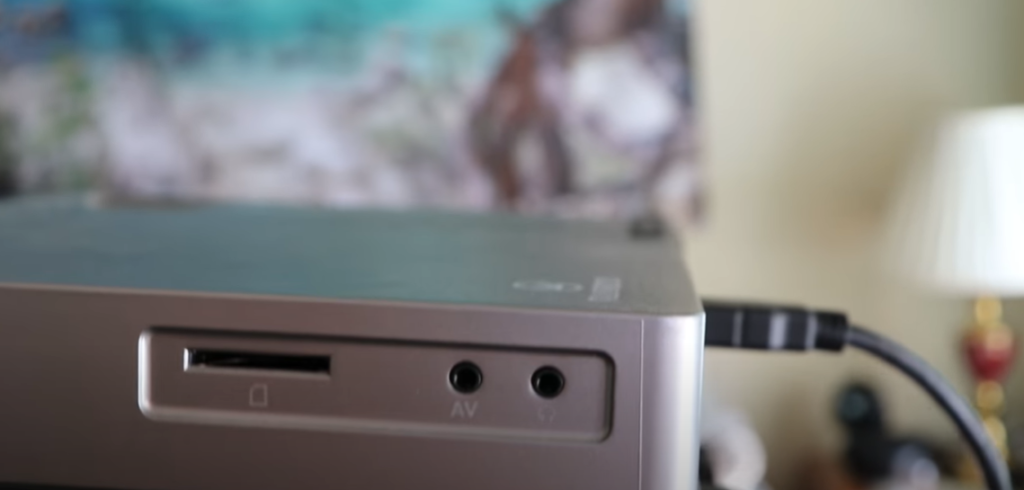
Now let’s take a look at the most popular types of prefactors:
- DLP Projectors: These projectors use a special type of chip that displays images using millions of tiny mirrors. They are usually small and lightweight, making them ideal for home theaters or presentations on the go.
- LCD Projectors: These projectors use liquid crystal display technology to provide bright and vivid colors with excellent contrast ratio and sharpness. Some models offer Full HD resolution and can be connected to multiple devices.
- Laser Projectors: These projectors use laser technology to provide superior picture quality with deep blacks and bright whites. They are also energy efficient, require no maintenance and have a longer lifespan than traditional bulbs.
- Portable Projectors: Small and lightweight, these projectors are great for presentations on the go. They are usually battery-powered and offer connectivity to multiple devices. [2]
What to Watch on a Projector?
Whether you’re looking for an immersive cinema-like experience or just want to have a movie night with friends and family, projectors are a great way to watch movies. With the latest technology, you can get high quality images from HD projectors that will make all your favorite movies look better than ever! Here’s some tips on what to watch on your projector in order to make the most out of your viewing experience:
- Cinematic blockbusters – With their sweeping cinematography, big budget effects and gripping storylines, cinematic blockbusters are a great choice for projector watching. From science fiction epics to action adventures, there’s something for everyone to enjoy on the big screen.
- Classic Films – If you’re looking for an old-school experience, classic films are the perfect way to go. From romantic comedies to classic horror films, these movies will transport you back in time and give you a taste of the golden age of cinema.
- Documentaries – If you want something educational as well as entertaining, documentaries are a fantastic choice. Whether it’s exploring the depths of our oceans, chronicling iconic musicians, or investigating a major political scandal, documentaries offer an eye-opening look into our world.
- Sports Events – If you’re looking for something more immersive and exciting to watch on your projector, why not try out a live sports event? From basketball tournaments to football matches, watching sports in HD quality will give you an experience that’s almost like being there in person.
- Independent Films – For something truly unique, independent films are a great choice. These small-budget productions often showcase fresh and innovative ideas, giving you a chance to discover new worlds and telling stories that you won’t find elsewhere. [3]

How to Set Up the Projector for Comfortable Viewing?
Now that you have a projector, the next step is to ensure that it is correctly set up for comfortable viewing. Here are some tips on how to do this:
- Place the projector at least 10 feet away from the wall or screen onto which you will be projecting. This allows your audience to view images clearly and without distortion. Additionally, the further away you place your projector, the larger the projected image will appear.
- Make sure that you adjust both the focus and zoom settings on your projector to get a clear and sharp image. If possible, use a ruler or other measuring tool to help ensure that all images are precisely in focus and correctly sized.
- To prevent eye strain, consider dimming the lights in the room or using a blackout blind to reduce glare and ensure that your audience can easily view the projected image without squinting.
- Check that all cables are correctly connected before you begin using your projector. This will help to avoid any unexpected technical difficulties during presentations or movie screenings.
- Make sure that there are no obstructions placed between the projector and the screen or wall onto which it is projecting. This will help to minimize shadows that can make viewing difficult.
- Adjust the brightness, contrast, and color settings on your projector accordingly until you find a balance that is comfortable for your viewers.
- Lastly, if possible, adjust the seating in the room to achieve the best viewing angle for your audience. This will help create an immersive experience and ensure that everyone is able to comfortably enjoy what they are watching. [4]
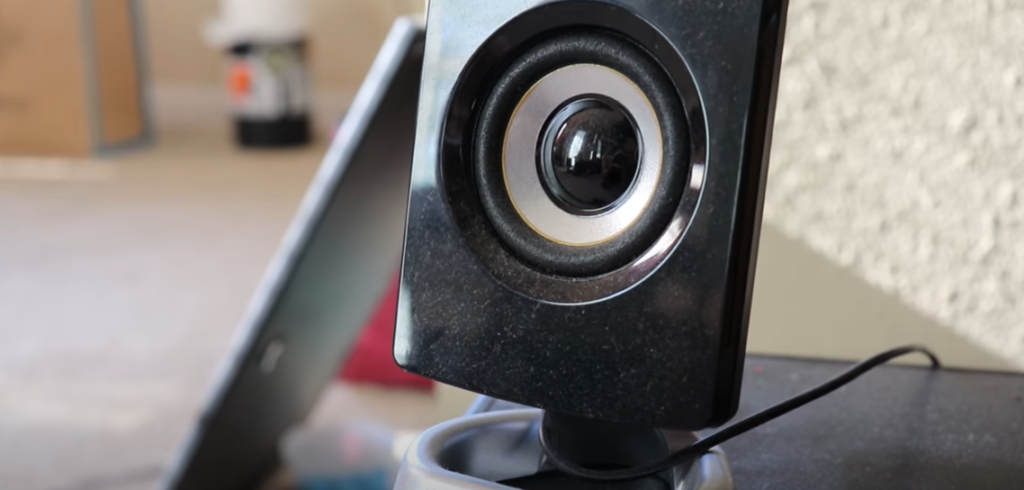
Is Sound Important in Projector Operation?
Projector operation often utilizes sound, either to provide audio for visual media or as a cue for alerts. Sound can be an important part of the projector experience, both in terms of normal usage and maintenance.
For instance, when trying to troubleshoot a projector issue, a user may need to listen out for any error messages or alert tones. If the projector isn’t working as expected, sound can often be used to identify and resolve the problem.
Projector manufacturers are aware of the importance of sound, and as such many projectors feature built-in speakers. This ensures that users can enjoy a complete multimedia experience right out-of-the-box without having to purchase additional audio equipment.
In some cases, projector speakers may not be powerful enough to provide satisfactory audio clarity or volume for large rooms or multiple viewers. If this is the case, external speakers can be connected to the projector to improve sound quality and ensure everyone can hear clearly. [5]
What are the Basic Sound Settings on a Projector?
Projectors are powerful tools for presentations, from school and business projects to Home Theater systems. A good projector should be able to provide a clear and crisp image as well as adequate sound. To ensure that your projector is properly optimized, it’s important to know the basic sound settings available on a projector. The most common sound settings you will find on a projector include:
- Volume: The volume setting determines how loud the sound will be. This should always be the first adjustment you make when optimizing your projector’s sound.
- Bass: Bass controls the amount of low frequencies in the audio output from the projector. Increasing or decreasing this setting can help make sounds more powerful and depthful.
- Treble: The treble setting affects the high frequencies in the audio output from your projector. Adjusting this will allow you to make sounds brighter and more clear.
- Balance: The balance setting determines how much of the sound comes out of each speaker or side of a stereo system. If one speaker has too much bass or volume, this can be adjusted with the balance setting.
- Surround Sound: If your projector has a surround sound system, you can adjust this setting to create an immersive audio experience. [6]
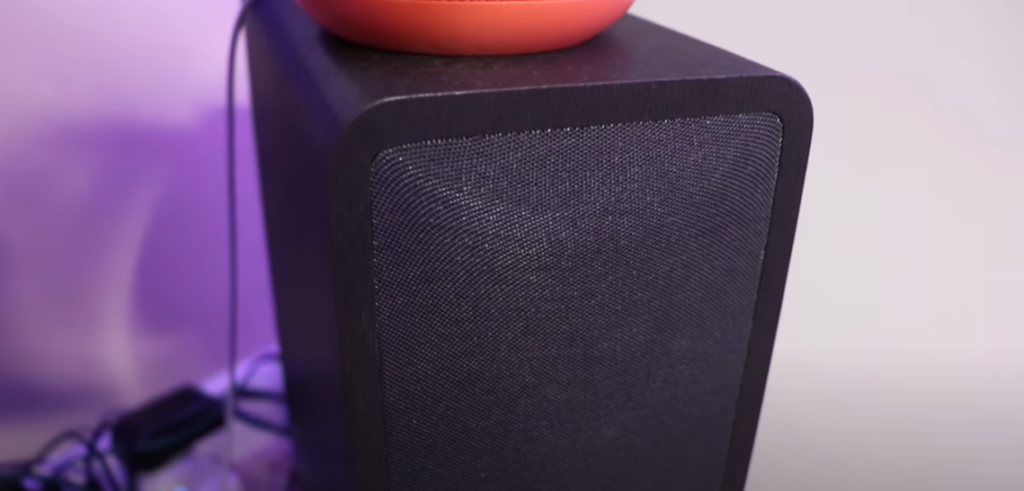
How to Make the Sound Louder on the Projector?
When you adjust the sound settings on a projector, you can make the volume louder or lower depending on your preferences. To make the sound louder, there are several adjustments that you can make.
Adjust the projector’s speaker settings
You can adjust the sound settings on your projector’s speaker by accessing the in-built menu. On some projectors, this may be a physical button on the remote control or device itself. Once you access the speaker settings menu, you should be able to increase or decrease the audio level of the projector.
Adjusting external speakers
You can also adjust the sound from external speakers, such as a home theater system. Depending on your speaker setup, this may involve adjusting the volume controls on the external speaker itself or using a remote control. Alternatively, you may be able to access sound settings through an audio receiver.
Check if your projector has additional audio options
Some projectors may have additional options to control the sound, such as an equalizer or bass/treble controls. You can find this in the projector’s audio menu. Adjusting these settings can help you customize your listening experience and make your projector sound louder.
Position and angle of speakers
If you are using external speakers with the projector, it is important to ensure that the speakers are positioned correctly. The sound may be louder if the speakers are angled towards you, as this can help direct the sound better. Additionally, make sure that your external speakers are not too far away from the projector itself as this may reduce the volume of the sound. [7]
How to Make the Sound Clearer on the Projector?
In addition to adjusting the basic settings, there are a few more steps you can take to make sure your projector’s sound is as clear and distinct as possible.
- First, try turning off any ambient background noise. This includes the hum from lights or air conditioners, as well as any other loud sounds that may be present in your environment. If necessary, you can even turn off the projector’s fan.
- Next, adjust the volume on your projector to make sure it isn’t too loud or too soft for everyone in the room to hear. The ideal setting is somewhere between quiet and just loud enough that everyone can understand what is being said without having to strain their ears.
- If the sound is still not clear enough, you may need to adjust the audio settings on your projector. This includes adjusting the bass and treble levels as well as the equalizer settings. Experiment with different combinations until you find a configuration that works best for your needs.
- Finally, if possible invest in an external speaker system or headphones so everyone can hear the sounds without straining to listen. This can be a great way to get better quality sound without having to make too many adjustments. [8]
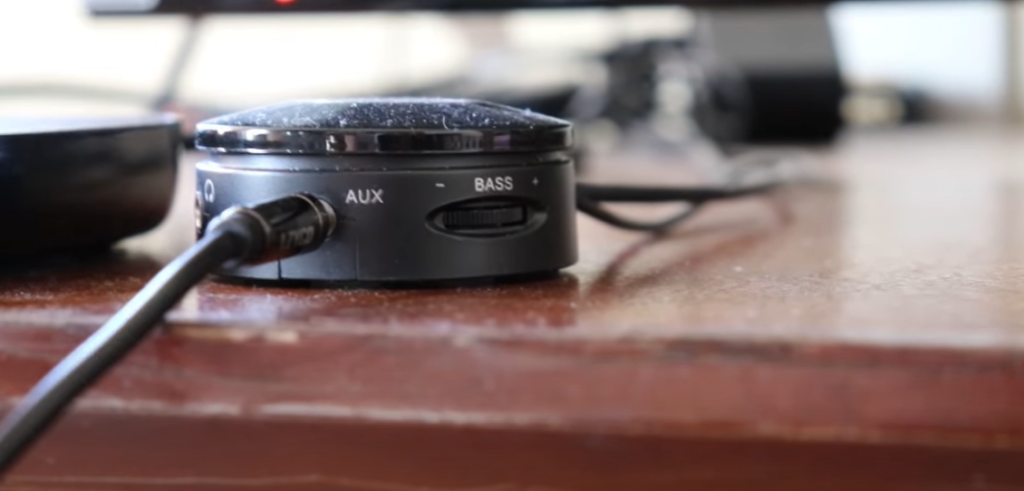
FAQs
Why is my projector sound so low?
If your projector’s sound is much lower than you expect, there are a few potential reasons. Firstly, check the settings to ensure that the volume is turned up as high as it can go. You may also want to check the audio cables and make sure they are plugged in securely. Additionally, some projectors will have an auto-power save setting. if this is enabled, the sound will be much lower than when it’s off. If all of these settings have been checked and adjusted but the volume remains low, you may need to consider getting an external speaker or amplifier for improved sound quality. Ultimately, the best way to ensure high-quality audio from your projector is by pairing it with a compatible external speaker system.
Can I connect a speaker to my projector?
Yes, you can easily connect a speaker to your projector. Many projectors have an audio output jack that allows the user to connect external speakers. This means you don’t need to worry about lousy or distorted sound coming from your projector’s internal speaker. Furthermore, the flexibility of having an audio output jack allows you to customize and enhance sound quality for films, conference calls, and presentations.
If you don’t have an audio output jack in your projector, another option is to connect the speakers directly to your computer or laptop. This can be done using a 3.5mm audio cable that plugs into the headphone port of your device. Once connected, you can easily adjust sound settings on any compatible software and enjoy better sound quality from the external speakers.
Finally, you can also connect your projector to a wireless speaker system. This allows you to enjoy the same high-quality audio from any location in the room without worrying about cables and wires getting tangled up around you! All you need to do is connect the projector to the compatible Bluetooth speaker, and then adjust sound settings directly through the device’s software.
What kind of speakers do you need for a projector?
You can opt for active or passive speakers depending on the size of your room and the sound quality that you would like to achieve.
Active speakers are powered by their own built-in amplifiers and provide an all-in-one solution. They also offer greater flexibility when it comes to placement and can be used in larger rooms. On the other hand, they require a power source and may be more expensive than passive speakers.
Passive speakers are much simpler as they don’t have any amplifiers built in. Instead, you’ll need an amplifier such as a receiver or home theater system to provide power. This makes them a great option if you already have an amplifier in place as they are generally cheaper than active speakers. However, they may lack the power and clarity of active speakers for larger rooms.
Do projectors have a good sound?
Sound quality is often overlooked in favor of picture quality. However, the audio component of a projector also plays an important role in your overall viewing experience. Whether you’re watching movies or giving presentations, you need good sound from your projector if you want to fully appreciate what’s on the screen.
Fortunately, many modern projectors have built-in speakers capable of providing a solid audio output. Many projectors also feature headphone jacks for easy connection to external audio systems or headphones. This allows you to customize the sound quality and volume according to your needs.
If you find yourself in a situation where your projector’s built-in speakers aren’t quite up to par, you can always opt for an external sound system. There are many options available, ranging from wireless speakers to full surround-sound systems.
Useful Video: One Easy Tip to DRASTICALLY Improve Projector Sound!
Final Thoughts
All in all, making a projector louder doesn’t have to be difficult. With the right soundbar and amplifier, it can be an affordable and easy DIY project. Of course, if you don’t have access to these items or want even better sound quality, you might consider shelling out for a good set of surround speakers and a home theater receiver package. Home theater solutions can offer significantly clearer sound than most sound bars and amplifiers, offering you the best possible sound quality for your entertainment needs. Whatever route you choose, loud projection audio is possible with some research and effort. Just remember to check your space’s power output before investing in any type of amplification solution!
References:
- https://www.whathifi.com/best-buys/home-cinema/best-projectors
- https://www.nytimes.com/wirecutter/reviews/best-projectors/
- https://www.theprojectorexpert.com/movies-to-stream-with-projector/
- https://www.kentfaith.com/blog/article_how-to-set-up-digital-projector-at-home-hd_668
- https://www.benq.com/en-us/knowledge-center/knowledge/do-i-need-to-buy-external-speakers-for-my-projector-setup–.html
- https://www.lifewire.com/get-sound-from-projector-to-speakers-5120463
- https://projectorsempire.com/how-to-make-projector-louder/
- https://www.kentfaith.com/blog/article_how-do-you-amplify-sound-from-a-projector_1076





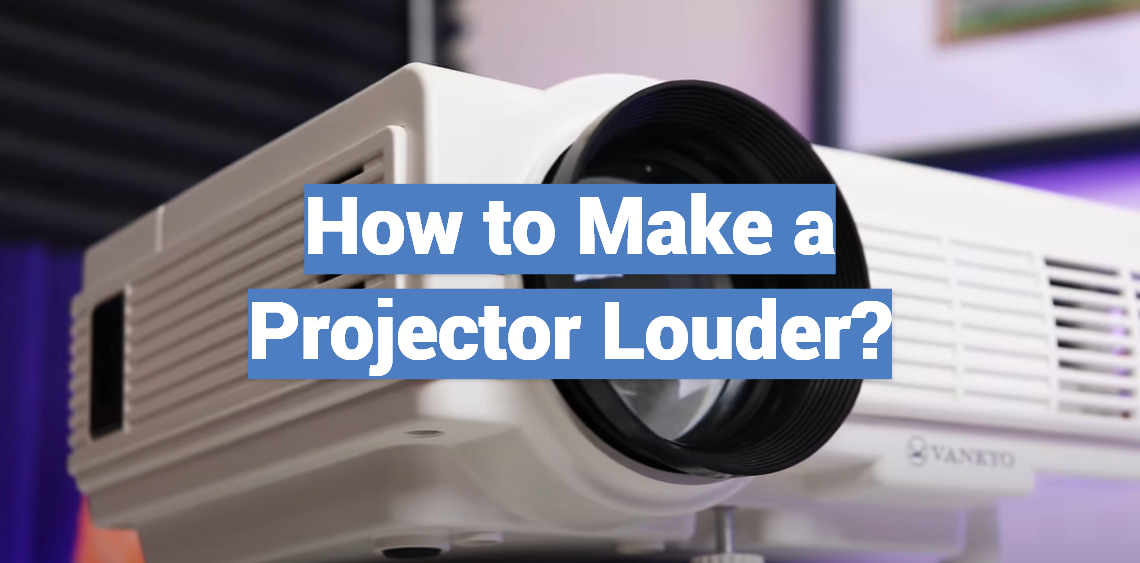
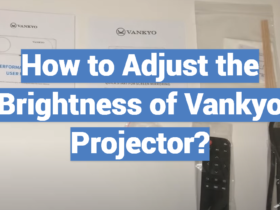



Leave a Review